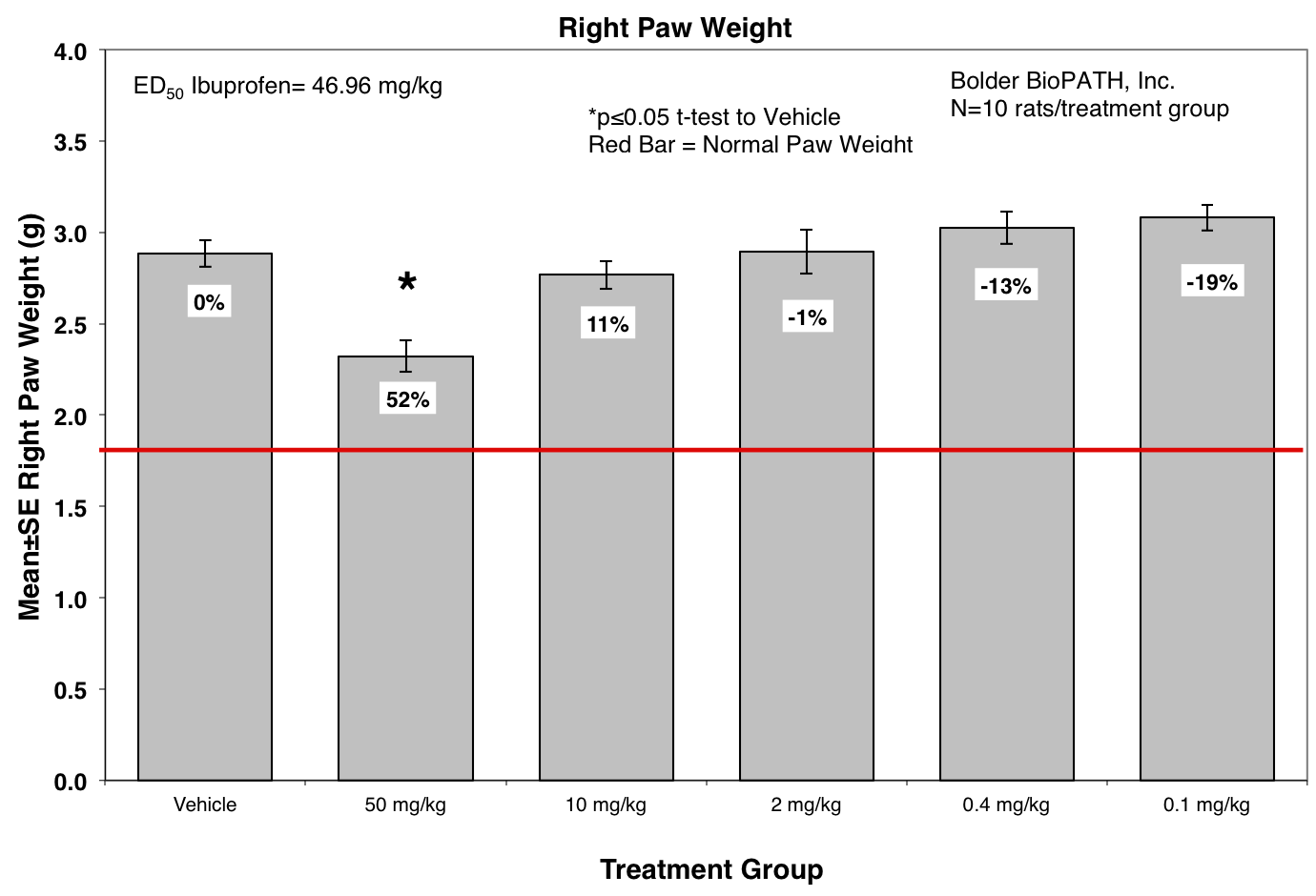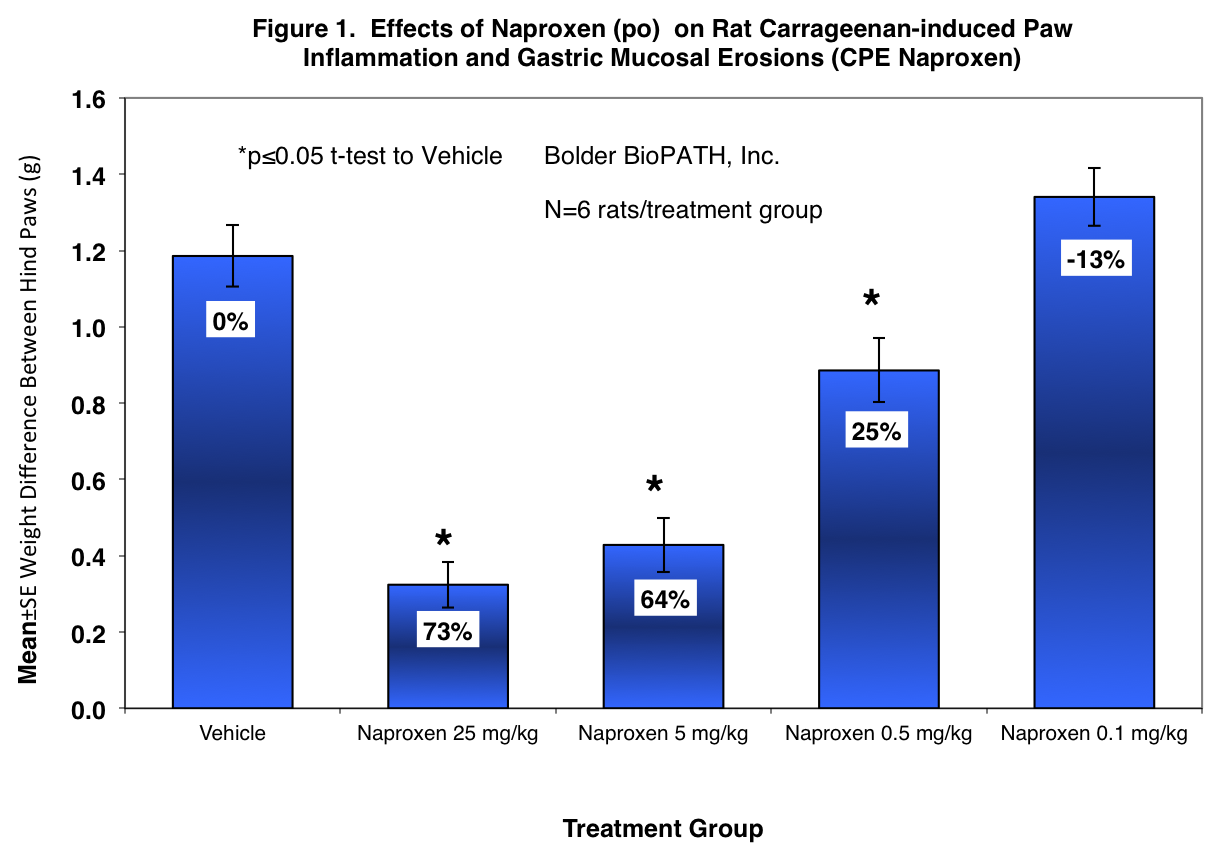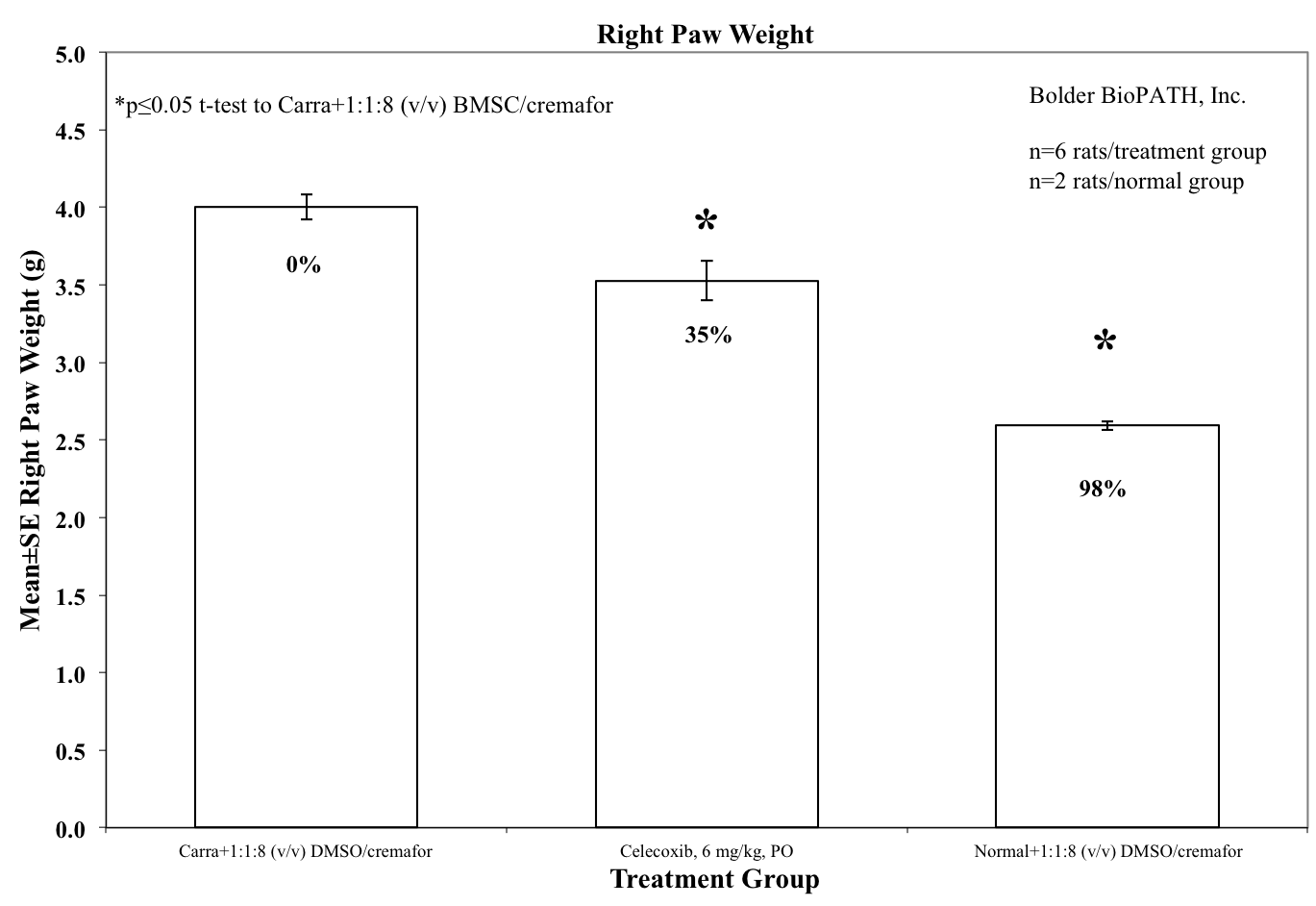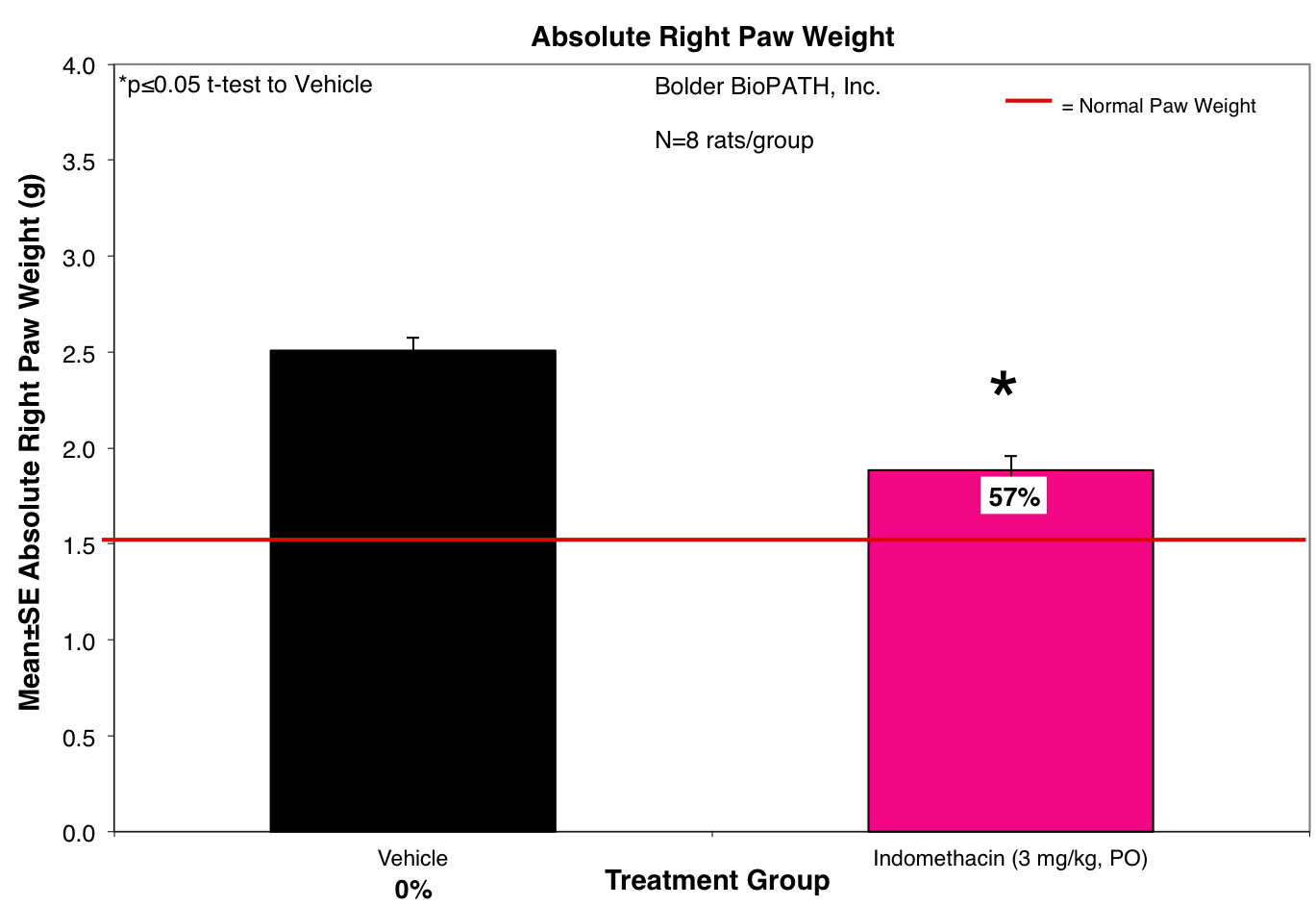Carrageenan Induced Paw Edema (Rat, Mouse)

Induction of Carrageenan Induced Paw Edema in Rat and Mouse:
On study day 0, animals are time dosed at one minute intervals and then injected with carrageenan (1.2% in saline) in the right hind paw at corresponding 1-minute intervals to induce edema.
Disease Parameters:
The carrageenan paw edema assay has long been used to detect anti-inflammatory activity which suppresses prostaglandin production,1,2,3 but other inflammatory mediators are important in the pathogenesis of the lesion.4 Generally the assay involves footpad injection of the irritant substance carrageenan, usually a half hour to an hour after dosing with the test compound. However, the interval between dosing and injection of carrageenan may vary depending on when peak plasma concentrations of the compound occur. Tissue levels of compound may also influence efficacy in this model.5
Dosing Paradigms:
Begin dosing 30 minutes to 3 hours prior to carrageenan injection; necropsy 4 to 4.5 hours after carrageenan injection. Route of administration: SC, PO, IP, IV
Clinical Assessment:
Caliper measurements of paws are taken at baseline (just prior to carrageenan injection) and again between 1 and 4 hours post-carrageenan injection. Four to 4.5 hours after carrageenan injection, animals are euthanized, and hind paws are transected at the level of the malleoli and weighed. Differences between injected versus non-injected and treated versus non-treated paws are determined.
Sample Data (Click on image to enlarge):
For additional examples of positive controls, please contact us.
Optional Endpoint
- PK/PD blood collections
- Cytokine/chemokine analysis via Luminex(R)
- Other sandwich ELISAs
- CBC/clinical chemistry analysis
- Soft tissue collection
- Histopathologic analysis
- Immunohistochemistry analysis
References:
- Winter CA, Risley EA, Nuss GW. Carrageenan-induced paw edema in hind paw of the rat as an assay for anti-inflammatory drugs. Proc Soc Exp Biol Med. 1962;111:544–547.
- Van Armen CG, Bengany AJ, Miller LM, Pless HH. Some details of the inflammations caused by yeast and carrageenan. J Pharmacol Exp Ther. 1965;150:328–334.
- Otterness IG, Bliven ML. Laboratory models for testing nonsteroidal anti-inflammatory drugs. In: JG Lombardino, ed. Nonsteroidal Anti-inflammatory Drugs. New York, NY: John Wiley & Sons; 1985:116–129.
- Vinegar R, Truax JF, Selph JL, Johnston PR, Venable AL, McKenzie KK. Pathway to carrageenan-induced inflammation in the hind limb of the rat. Fed Proc. 1987;46:118–126.
- Bendele AM, Ruterbories KJ, Spaethe SM, Benslay DN, Lindstrom TD, Lee SJ, Naismith RW. Correlation of anti-inflammtory activity with peak tissue rather than peak plasma levels of BF389. J Pharm Exp Ther. 1992; 260:1194–1198.
For more information about Carrageenan Induced Paw Edema (Rat) contact us here.
Related Pages
Pain Models
- Oxazolone Induced Ear Delayed Type Hypersensitivity (Mouse)
- mBSA Induced Footpad Delayed Type Hypersensitivity (Mouse)
- Carrageenan Induced Paw Edema (Rat & Mouse)
- Lipopolysaccharide Induced Cytokine Cascade (Rat, Mouse)
- IL-23 induced Psoriasis (Mouse)
- IMQ induced Psoriasis (Rat, Mouse)
- Monosodium Urate-Induced Gout
- Zymosan Induced Peritonitis
- Non-Lethal Cerulein-Induced Pancreatitis (Rat, Mouse)





